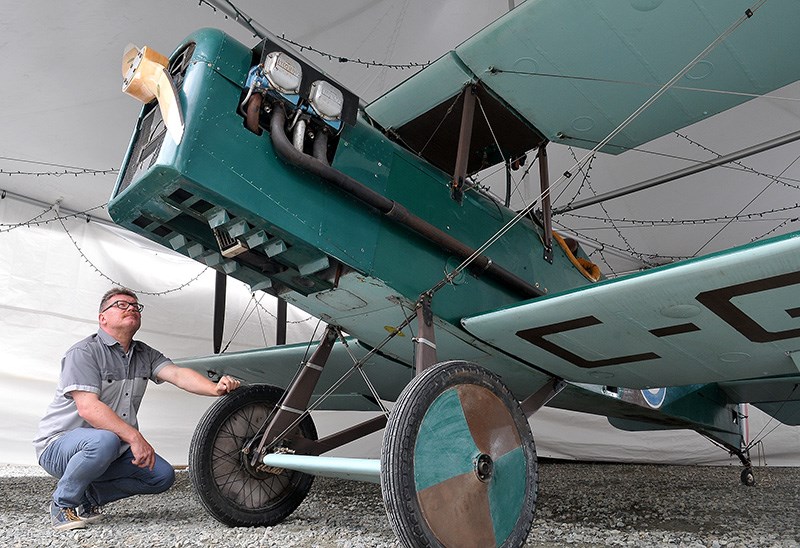A display at Port Moody’s Station Museum that conveys some of the hardships and horrors of ground warfare during WWI has been joined by a relic of that conflict’s air war.
In many ways, it was just as brutal.
The museum recently took delivery of a 7/8-scale replica of a Royal Air Force S.E.5a fighter biplane that engaged in mid-air dogfights with enemy aircraft over the battlefields of France and even flew “bombing” runs over German trenches, the pilot dropping fistfuls of large nails onto unsuspecting soldiers below.
The plane was donated to the museum by John Grasty and Deborah Nijdam. They acquired it from the widow of an aviation enthusiast in Maple Ridge who spent 10 years building it from a kit and even flew it for a few years before he passed away in 1998.
Markus Fahrner, one of the museum’s co-ordinators, said the plane is on display adjacent to its McNight trench, a recreation of a typical section of reinforced trench where Canadian soldiers lived, fought and often perished during WWI.
Fahrner said with aviation still in its infancy, the odds of survival for biplane fighter pilots during WWI were not in their favour. The first incarnation of the S.E.5, deployed in 1917, was underpowered with only a 150 horsepower engine and the pilot often shot down reconnaissance balloons or engaged enemy aircraft with a pistol or shotgun they stored in the cockpit.
The S.E.5a had a more powerful engine and stable design that made it a worthy dogfighting rival to the Sopwith Camel and a better match against German Fokkers. By the end of the war, it was being flown by 21 British Empire and two American squadrons.
Fahrner said the closest Canadian pilot who flew the S.E.5a was Freddie McCall, of Vernon, who recorded 35 kills and earned a Military Cross and Distinguished Service Order.
Fahrner said the museum’s plane has been repainted in the colours of McCall’s No. 41 Squadron RAF and a display board telling his story erected alongside the aircraft.
“We’ll turn it into his plane,” Fahrner said.
While McCall survived the war and returned to Canada to live out his life in Calgary, about one in five British Empire pilots perished, and another 1,000 were killed during training.
Fahrner said the plane didn’t offer much protection. The wings and most of the fuselage were constructed of fabric stretched taunt over a wooden frame and stiffened with a slathering of aircraft dope, a kind of plasticized lacquer. The plane didn’t have brakes. Instead, it relied on a wooden peg underneath the tail to create enough friction as it dragged along the ground while landing. Sometimes it snagged on a rock or a crack and caused the plane to flip.
In the air, controlling the craft was no picnic either, as the pilot pushed and pulled an array of pedals and levers all while keeping an eye out for the enemy.
“When you flew this, you got a workout,” Fahrner said. “There was no power steering.”



